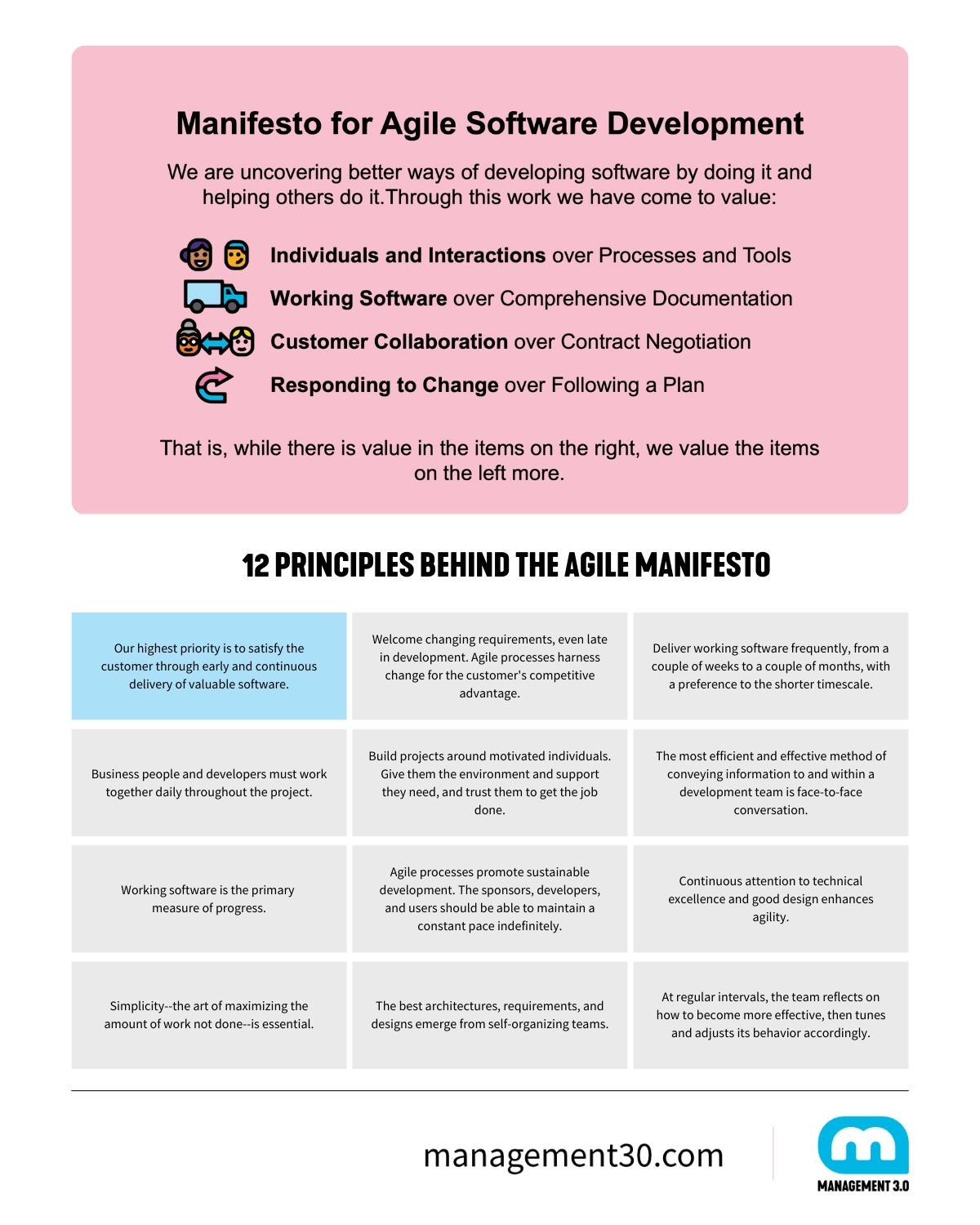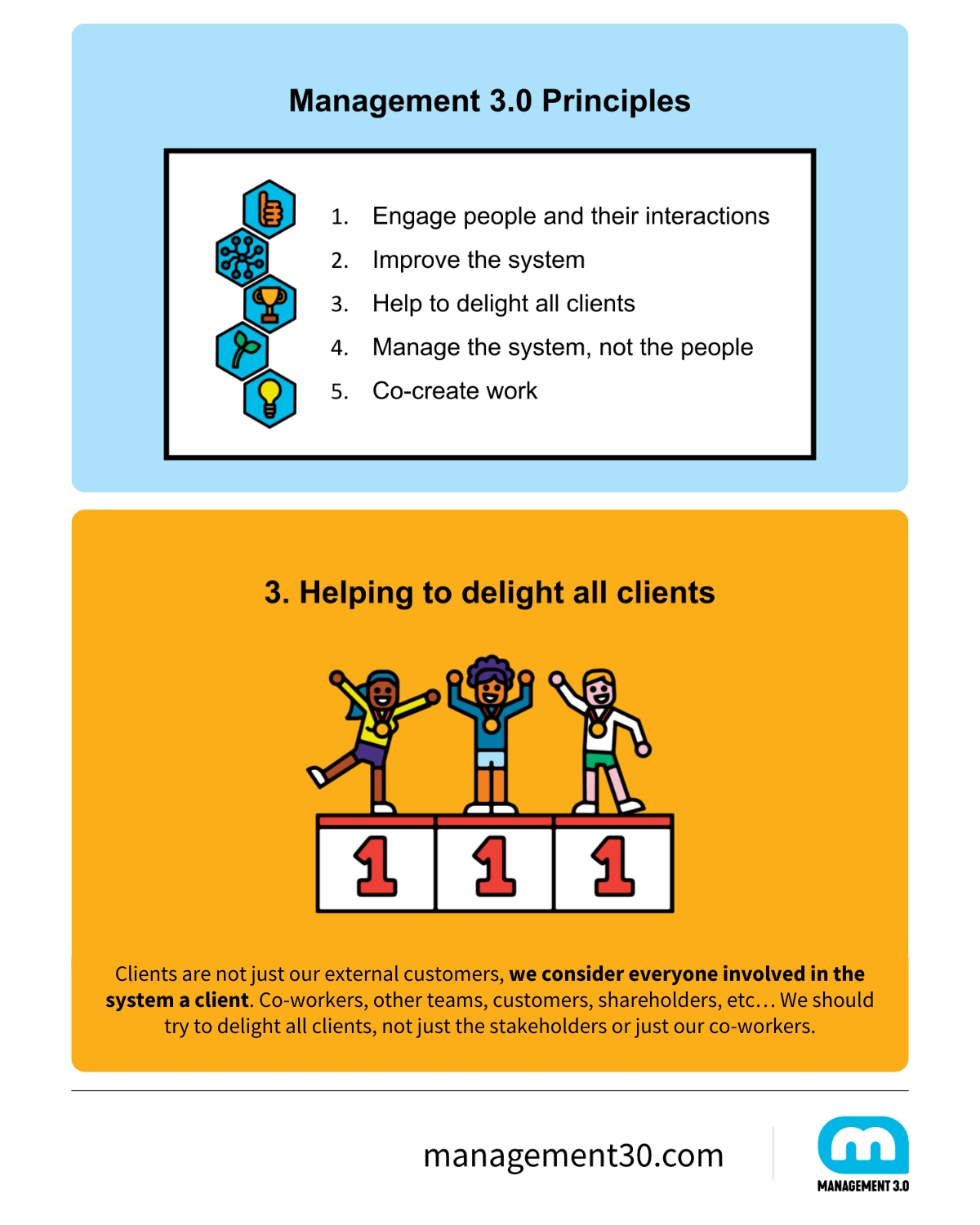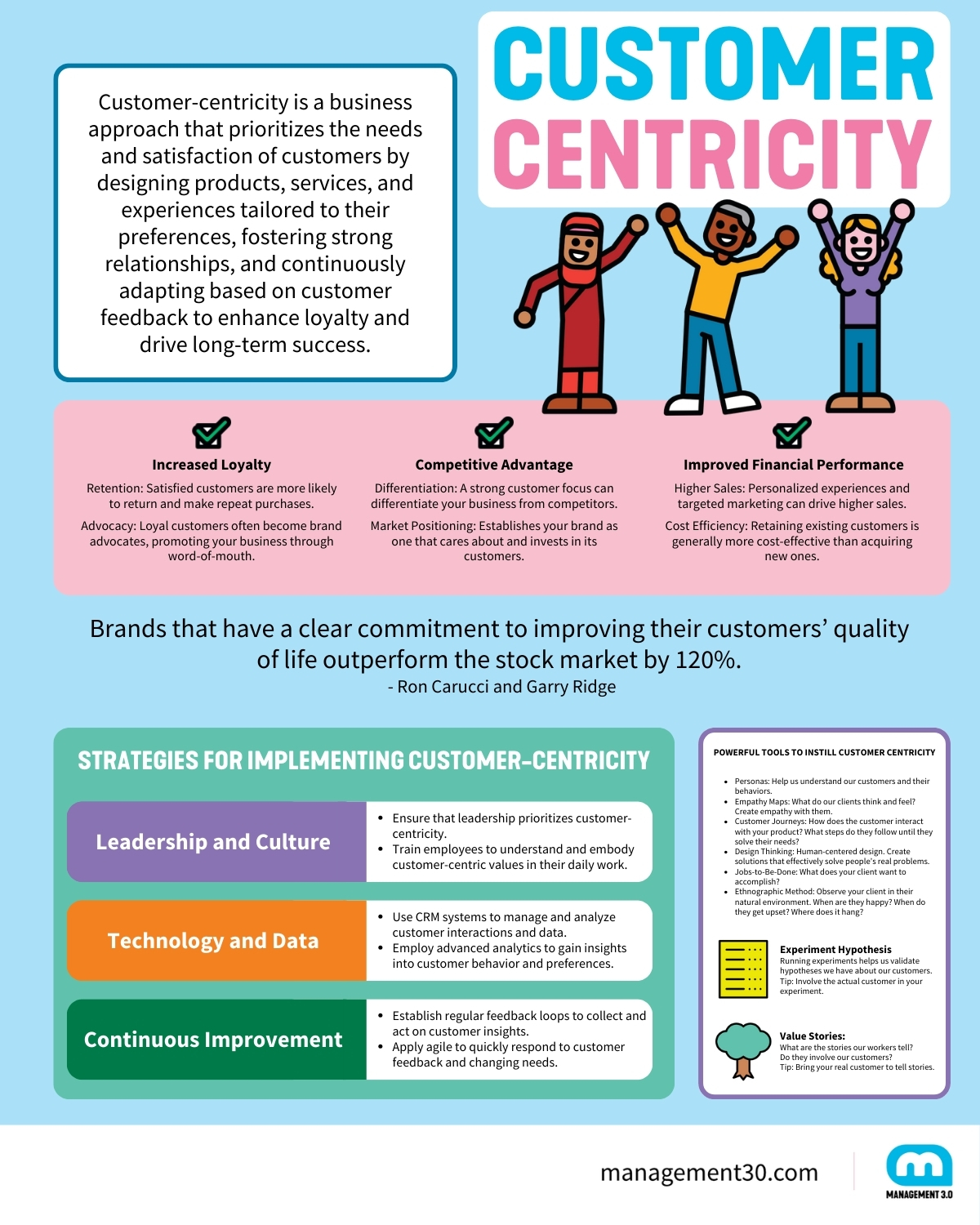by Thiago Brant, reflecting on a pivotal experience as a Product Owner launching an MVP for a financial institution. Initially focused on technical aspects, a usability test highlighted a critical oversight: customer usability. This revelation underscored the importance of customer-centricity—prioritizing customer needs and experiences above all else. Drawing insights from Agile principles and SAFe, the article explores how companies can embed customer-centric thinking across all functions. It emphasizes the value of understanding customer behaviors, innovating collaboratively, and fostering a culture where every decision aligns with enhancing customer satisfaction and loyalty.
In this article:
I once worked on a project as a Product Owner. The objective was to launch an MVP of an online loan solution for a financial institution in four months. The financial company urgently needed to migrate to the digital world to avoid disappearing from the map.
It was their first time using Scrum as a framework, and the team absorbed it very well. The entire process, with its ceremonies, went smoothly. We were grounded in market research and exploring competitor solutions. We had an excellent technical team and were engaged with the initiative.
On the eve of launching our first version, we finally organized a usability test with a natural person compatible with the solution’s persona.
And that’s when everything changed for me!
With the team ready, we gave our user the mission of requesting an online loan for a hypothetical trip. She sat down at the notebook and started the process. We were worried about the interest rate values and whether they would be acceptable. To our surprise, the first significant objection appeared when she needed to provide her date of birth.
She couldn’t do it! Our technical team chose a data component that the user could not use. She broke out in a cold sweat, asking, “This is when I would call my son to help me.” She was uncomfortable.
This important moment showed us something crucial. Even though our team was skilled and we planned carefully, the test taught us a big lesson:
- If we don’t focus on what the customer needs, even the best plans can fail.
As we looked over all the feedback we got, it was clear that
- Making sure customers are happy isn’t just part of our job—it’s what makes us successful.
And
- There is no point in having a great team with everything working if the customer is not at the center of everything.
What is Customer-Centricity?
But what does customer-centricity mean?
According to SAFe (Scaled Agile Framework):
“Customer Centricity is a mindset that focuses on creating positive customer experiences through the full suite of products and services the company offers.”
In other words, it is a mindset that directs all our products and services around our customer’s experience.
Still, according to SAFe, this is due to:
- Customer focus – Aligning and focusing the organization on specific, targeted user segments.
- Understanding customer needs – Going beyond just listening to customers requesting features and investing time to identify fundamental, ongoing customer needs.
- Thinking and feeling like the customer – Striving to see the world from the customer’s point of view.
- Building end-to-end product solutions – Designing a complete solution to user needs and ensuring that the initial and long-term customer experience continually evolves toward the ideal solution.
- Knowing the customer’s lifetime value – Moving beyond a transactional mindset and focusing on creating long-term relationships based on clearly understanding how the customer gains value.
Customer-centricity is a business approach that prioritizes the needs, preferences, and satisfaction of customers above all else. It involves designing products, services, and experiences with the customer in mind, and focusing on building strong, long-term relationships with them. This approach often involves gathering and analyzing customer feedback, understanding their pain points and desires, and using that information to tailor offerings and interactions to better meet their needs. Ultimately, the goal of customer-centricity is to create value for customers, leading to increased loyalty, retention, and ultimately, business success.
An important distinction here is that we have two different views to consider:
- The customer is the person who buys/pays for your product/service.
- The user is the person who uses your service.
An incredible example of this theme occurred at Haier, a sizable Chinese household appliances company known as “the world’s most creatively managed company.”
Haier once discovered in its maintenance services that many washing machines were arriving with problems. They investigated what was happening, observing how the users used the product. This team encountered something unusual: people used the washing machine to wash… vegetables.
That’s right! Vegetables! It was where the sale of vegetables was necessary, and when the seller had clean and shiny vegetables, they could charge more. So they started washing the product in washing machines.
That is “understanding customer needs,” in this case, the user. Haier knows that in a family (the users), for example, if everyone is happy using a product, they will convince the head of the family (the one who pays for the product, the customer) to buy it.

A brief pause to suggest something to HR professionals reading this article:
Have you ever paused to reflect on ‘Who is HR’s customer? Who are our users?’
Share your thoughts.
Importance: Why Does a Customer-Centric Approach Matter?
There are several reasons to adopt a customer-centric approach, but I’ll start with the one that perhaps catches the most attention from corporations:
Brands that have a clear commitment to improving their customers’ quality of life outperform the stock market by 120%.
See this article on HBR from 2022: HBR
This article, cited in the Meaning and Purpose module of Management 3.0’s Agile People Leadership Workshop, also provides other impressive information:
- Over the last decade, purpose-driven brands have seen their valuation skyrocket by 175%
- 77% of consumers feel a stronger connection to purpose-driven companies over traditional companies
- 66% of consumers would switch from a product they typically buy to a new product from a purpose-driven company
That’s right! Having a focus on the customer will help the company have more revenue. This is also the #1 reason SAFe lists, adding:
- Greater employee engagement: Knowing that we are doing something meaningful and solving real people’s problems makes us more engaged. Teams with a sense of purpose are more effective than those without.
- More satisfied customers: This is self-explanatory. If we meet our customer’s needs, they will be more satisfied. They are more likely to make repeat purchases and they are more likely to remain loyal to your brand, even in the face of competition. Also, satisfied customers often share their positive experiences with others, generating valuable word-of-mouth marketing.
- Better product resilience and sustainability: This is the much-talked-about “Love the Problem.” Companies that understand their customers’ problems and challenges will go further. A customer-centric approach involves actively seeking feedback from customers, enabling you to identify areas for improvement and innovate to better meet their needs and it allows you to adapt quickly to changes and stay relevant in the eyes of your customers.
Customer-Centric Culture: How to Create a Customer-Centric Strategy?
Creating a customer-centric strategy involves focusing your business operations, processes, and culture on delivering an exceptional customer experience.
But how?
According to Jonathan Hughes, David Chapnick, Isaac Block, and Saptak Ray in an article for the University of California, Berkeley, market leaders achieve this by:
- Embed customer-centric thinking and practices in the company’s DNA across all functions
Ensure that every department and team within the organization prioritizes the customer’s needs and perspectives. This means integrating customer-focused strategies and practices into the company’s core operations, values, and culture, so that customer-centricity becomes second nature in every decision and action. (See both Brazilian examples below) - Seek competitive differentiation through every aspect of the customer journey and experience
Strive to stand out from competitors by offering unique and superior experiences at every touchpoint in the customer journey. This involves identifying and enhancing moments that matter to customers, from initial awareness and engagement to post-purchase support, ensuring that each interaction leaves a positive and memorable impression. (See Amazon example below) - Externalize innovation
Encourage and facilitate innovation beyond the company’s internal efforts. This can include collaborating with customers, partners, and other external stakeholders to co-create products, services, and solutions that address real-world needs and challenges, thus driving growth and differentiation. (The Open Innovation initiative like Cubo Itaú in Brazil is a great example) - Reorient sales – from selling to customers to selling for customers
Shift the focus of sales teams from merely pushing products to genuinely understanding and addressing the needs and desires of customers. This approach prioritizes building relationships, solving problems, and adding value, ultimately fostering loyalty and long-term customer satisfaction. (See Apple example below) - Marry customer-centricity with employee engagement
Recognize that engaged employees are crucial to delivering exceptional customer experiences. Foster a workplace culture where employees feel valued, empowered, and aligned with the company’s customer-centric goals. Engaged and motivated employees are more likely to go the extra mile to meet and exceed customer expectations. (Refer to the last section of this article, or read my other article about Enhancing the Employee Experience with Management 3.0)
Strategies for Implementing Customer-Centricity
Leadership and Culture
- Top-Down Commitment: Ensure that leadership prioritizes customer-centricity and fosters a customer-focused culture.
- Employee Training: Train employees to understand and embody customer-centric values in their daily work. We have Inhouse Programs to upskill entire organizations.
Technology and Data
- Customer Relationship Management (CRM): Use CRM systems to manage and analyze customer interactions and data.
- Analytics: Employ advanced analytics to gain insights into customer behavior and preferences.
Continuous Improvement
- Feedback Loops: Establish regular feedback loops to collect and act on customer insights.
- Agile Practices: Implement agile methodologies to quickly respond to customer feedback and changing needs.
Customer-Centricity and Agile Principles
There’s a strong connection between customer-centricity and Agile principles. Both emphasize flexibility, responsiveness, and continuous improvement.

- Customer Focus: Both approaches prioritize the needs and feedback of customers. In Agile, customer feedback is integrated into the development process through practices like user stories and regular demonstrations. Similarly, in a customer-centric approach, customer feedback drives product development and improvement efforts.
- Iterative Approach: Agile methodologies advocate for iterative development cycles, where products are developed incrementally and refined based on feedback. This aligns well with the customer-centric approach, as it allows organizations to quickly adapt to changing customer needs and preferences.
- Empowerment and Collaboration: Agile principles emphasize empowering teams to make decisions and collaborate effectively. This enables teams to respond quickly to customer feedback and make necessary adjustments without bureaucratic hurdles. Similarly, in a customer-centric organization, cross-functional teams are empowered to collaborate and innovate to deliver exceptional customer experiences.
- Continuous Improvement: Both Agile and customer-centricity promote a culture of continuous improvement. Agile teams regularly reflect on their processes and seek opportunities to improve efficiency and quality. Similarly, customer-centric organizations are committed to continually enhancing products, services, and experiences to better meet customer needs and expectations.
The alignment between Agile principles and customer-centricity is strong, as both emphasize adaptability, collaboration, and a relentless focus on delivering value to customers. Organizations that embrace both approaches are better positioned to thrive in today’s dynamic and customer-driven marketplace.
The Agile Customer Centricity Manifesto
for Sales, Marketing, HR and More
The Agile Customer-Centric Manifesto (ACCM) recognizes important aspects often overlooked in business and its functions: focusing on people! It emphasizes the significance of both our internal and external customers.
ACCM aims to break down silos and encourage collaboration across different functions, guided by principles of social responsibility and advocating for the needs of both internal and external customers. It draws inspiration from various manifestos including those for development, marketing, sales, people, and HR Agile Manifestos, as well as insights from Scrum Values, Declaration of Interdependence, and research on Agile value connections.
Among the signatories of the ACCM are previous and existing Management 3.0 facilitators.
Practical Approaches to Customer-Centricity
I’ve come across two exciting approaches from companies moving to a customer-centric approach:
- A sizeable Brazilian bank placed a notice at the entrance of all meeting rooms with the phrase, “Is your client participating in this meeting?” It was a reminder for the meeting to bring the client into the topic to be discussed.
- In another company in Brazil, with many innovative initiatives, a chair was placed in each meeting room and event space with a cover simply reading “Client.” It was a reminder that we always have to have the client participate in our discussions.
Frederic Laloux, author of Reinventing Organizations, has an interesting test to determine whether an organization’s purpose is valid. One of the questions is: “What would happen to your organization’s sales if your customers had to watch an honest video of how your products/services are made?”
I would adapt this to: “What would happen to your sales if the customer was inside the meetings where things are decided?”
Think about it. But here’s an important warning: look at the story of the online loan I told at the beginning and the Haier vegetable washing machine. These two stories have an interesting aspect. In both cases, the customer was not a simulation but the actual customer in the customer’s environment.
As crucial as initiatives to consider the customer in the company’s day-to-day operations are, the most important thing is understanding your customers, observing them, and interacting with them where things happen: in real life.
HubSpot, renowned for its exceptional CRM tool, offers valuable advice for organizations striving to become customer-centric. Their recommendations encompass anticipating customer needs, collecting feedback, ensuring accessibility, and fostering personal interactions by meeting customers in person. These proactive measures align with the ethos of prioritizing customer satisfaction and enhancing the overall customer experience.
In the following skills and tools session, I will focus on this practical aspect of involving the customer.
Customer-Centric Skills and Tools
To be customer-centric, we will need some essential soft skills:
- Empathy
- Communication
- Problem-Solving
- Patience
- Adaptability and Flexibility
- Building Relationships
- Collaboration
- Emotional Intelligence
With this mindset, we can apply several powerful tools, such as:
- Personas: Help us understand our customers and their behaviors. Tip: Don’t just focus on data; go into the field and get to know your actual customers.
- Empathy Maps: What do our clients think and feel? Create empathy with them. Tip: Create an empathy map by observing your clients and experiencing what they experience.
- Customer Journeys: How does the customer interact with your product? What steps do they follow until they solve their needs? Tip: Build this journey by observing your real customer in action while performing tasks.
- Design Thinking: Human-centered design. Create solutions that effectively solve people’s real problems. Tip: Pay close attention to the steps involved in field research, and do it in the field.
- Jobs-to-Be-Done: What does your client want to accomplish? Tip: Watch them in action and ask yourself: why do you want to do this? Use the five whys here.
- Ethnographic Method: Observe your client in their natural environment. When are they happy? When do they get upset? Where does it hang?
Experiment Hypothesis
Running experiments helps us validate hypotheses we have about our customers.
Tip: Involve the actual customer in your experiment.
Value Stories
What are the stories our workers tell? Do they involve our customers?
Tip: Bring your real customer to tell stories.
Examples of Customer-Centric Companies
Haier: Haier again, the prominent Chinese household appliances company known for its innovative management practices, serves as a prime example of customer-centricity. Haier revolutionized its organizational structure, transforming its traditional pyramid into 4,000 autonomous units resembling micro-enterprises, all dedicated to creating value. This approach, termed ‘Zero Distance,’ brings the company closer to its customers by decentralizing decision-making and fostering direct interactions. During the COVID-19 pandemic, Haier exemplified agility by swiftly adapting its production line to manufacture masks, showcasing its commitment to meeting customer needs promptly.
Amazon: Amazon is also a great example with its easy return policy. Concerned about its customer experience, Amazon created a policy where customers generally have 30 days to return an item for almost any reason. To give you an idea, “The Amazon paradigm heralded a major change in consumer expectations that we now see reflected across the entire retail industry.”
Apple: A friend once visited Apple in New York to exchange his cell phone. He wanted a top-of-the-line model with the most memory possible. The person who helped him tried to understand his needs and offered another model with less memory and 300 dollars cheaper. When asked about the commission and whether it makes sense for a seller to offer a cheaper product, the attendant replied, “Here at Apple, we are not sellers; we are consultants available to help the customer find the best option for them.”
Nubank: Here in Brazil, we have the example of Nubank, a digital bank obsessed with its customers’ experience, whose purpose is ‘To fight complexity to empower people.’ Nubank has consistently met my expectations, far exceeding other companies’ performance in customer service. While other companies require a cumbersome process to reach someone, Nubank stands out by providing seamless access to attentive customer service representatives with just a few clicks.
How Does Management 3.0 Contribute to a Customer-Centric Culture?
In the last five years of actively working with Management 3.0, I have found that many of the practices and tools we cover are related to teams and workers. But where is the “Helping to Delight All Clients” I mentioned above?
It is interesting to state here what Management 3.0 considers to be a customer:
“Customers are not just our external customers. We consider everyone involved in the system as customers: co-workers, other teams, customers, shareholders, etc. We must delight all customers, not just stakeholders or our co-workers.”

That’s why “we manage the system, not the people.” Management 3.0 aims to create a working system that benefits all stakeholders, including customers and users.
When we talk about “Engaging people and their interactions,” it is because people involved in work will solve other people’s problems more effectively. When we say “Improve the system,” we want a more optimized system to generate value for our customers. When discussing “Co-create work,” we discuss a continuous feedback cycle involving everyone, including our client.




